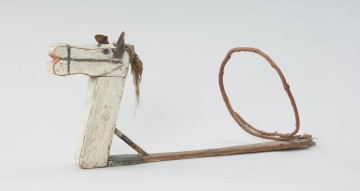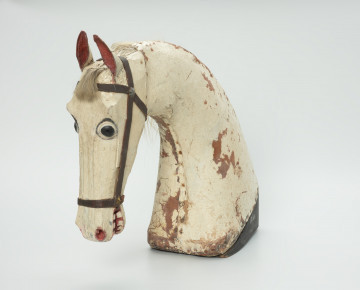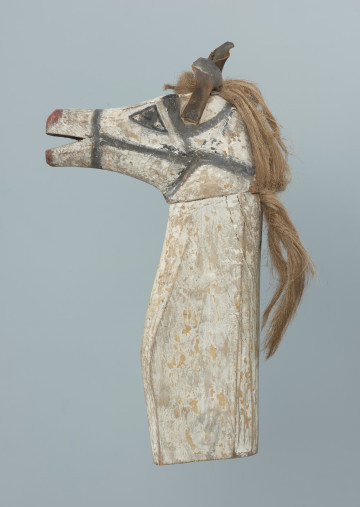
Hoarse - ceremonial item
1. połowa XX wieku
National Museum in Szczecin
Part of the collection: Music instruments
Devil’s (bladder) fiddle is a musical instrument that can be classified as a chordophone, or a string instrument. It was mainly found in the Kashubian and Kurpie regions. The sound of a bladder fiddle was made by plucking the strings and rhythmically hitting them against the ground. The resulting noise (buzzing), the so-called ritual uproar, was meant to ward off evil forces. The devil's fiddle was used on all of the community’s important days of the year: carol festivities at Christmas, New Year's celebrations, carnivals, Easter, harvest festivals and All Souls' Day. They were also played during family celebrations such as weddings and funerals. In modern times, the devil's fiddle no longer plays a ceremonial role. It represents an element of the Kashubian regional identity and is used as a percussion instrument in folk bands. The featured devil's fiddle has been constructed of a long stick, decorated on the top, two metal cymbals and a string. It is one of only two objects of this type in the collection of the Pomeranian Ethnography Department of the National Museum in Szczecin. The museum records of this object can be traced back to the Pommersches Landesmuseum Stettin, one of Szczecin's two pre-war museums, whose collections, partly left behind by the retreating Germans, were secured by the first Polish museum professionals in Szczecin in the 1940s. Agnieszka Słowińska
Author / creator
Object type
musical instrument
Technique
planing
Material
wood, sheet metal, wire
Origin / acquisition method
acquisition
Creation time / dating
Creation / finding place
Owner
Muzeum Narodowe w Szczecinie
Identification number
Location / status

1. połowa XX wieku
National Museum in Szczecin

1. połowa XX wieku
National Museum in Szczecin

National Museum in Szczecin
DISCOVER this TOPIC
Museum of King Jan III's Palace at Wilanów
DISCOVER this PATH
Educational path